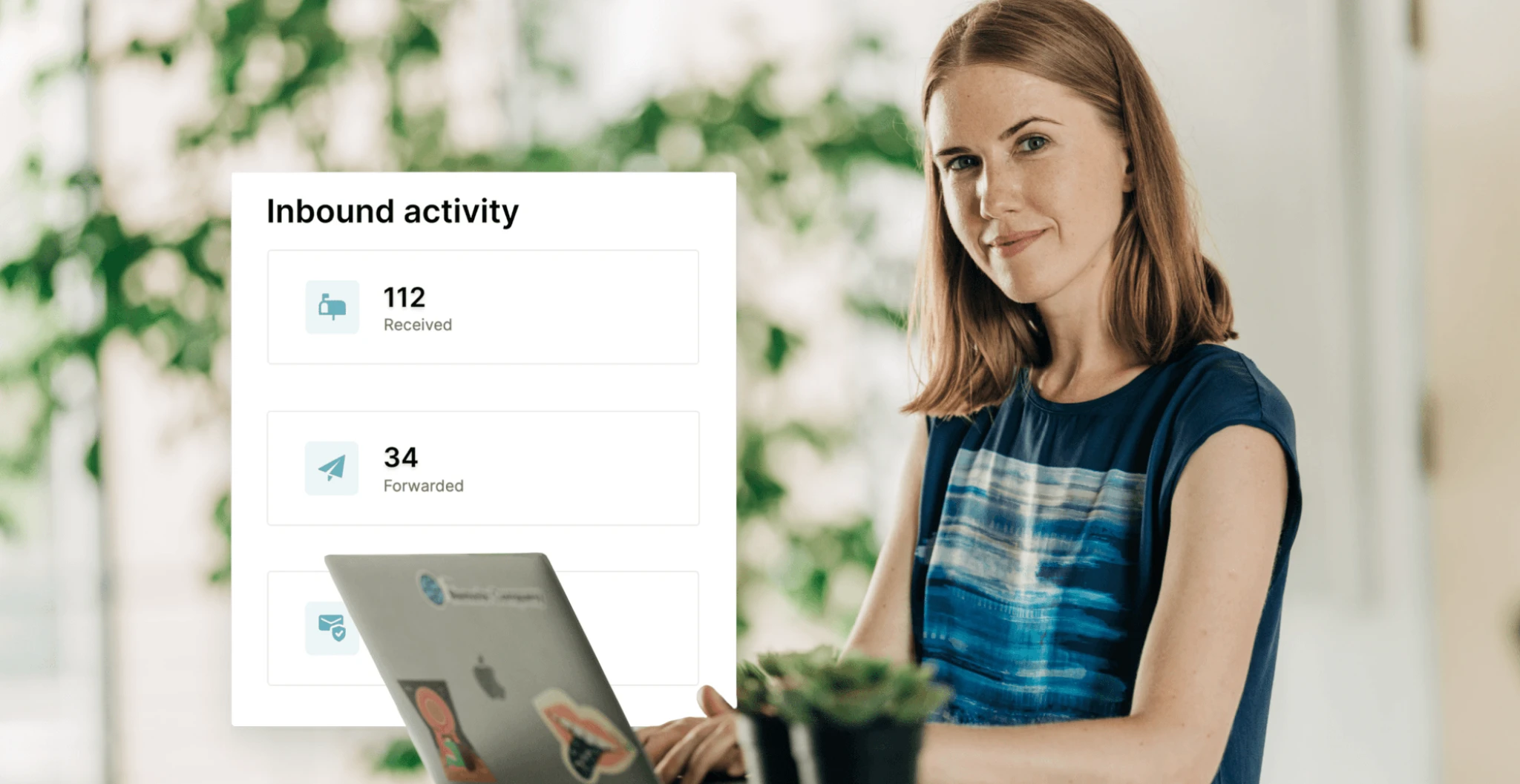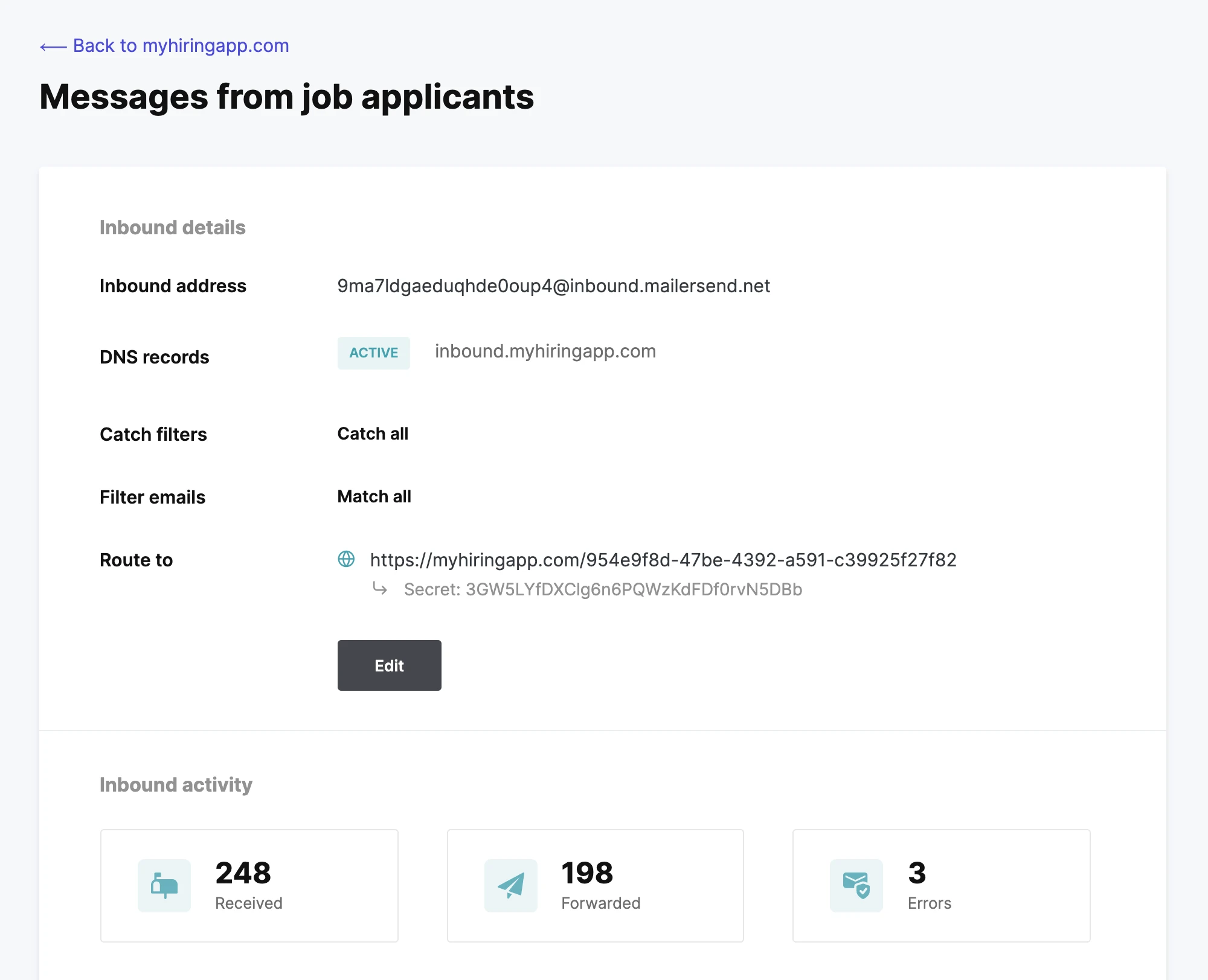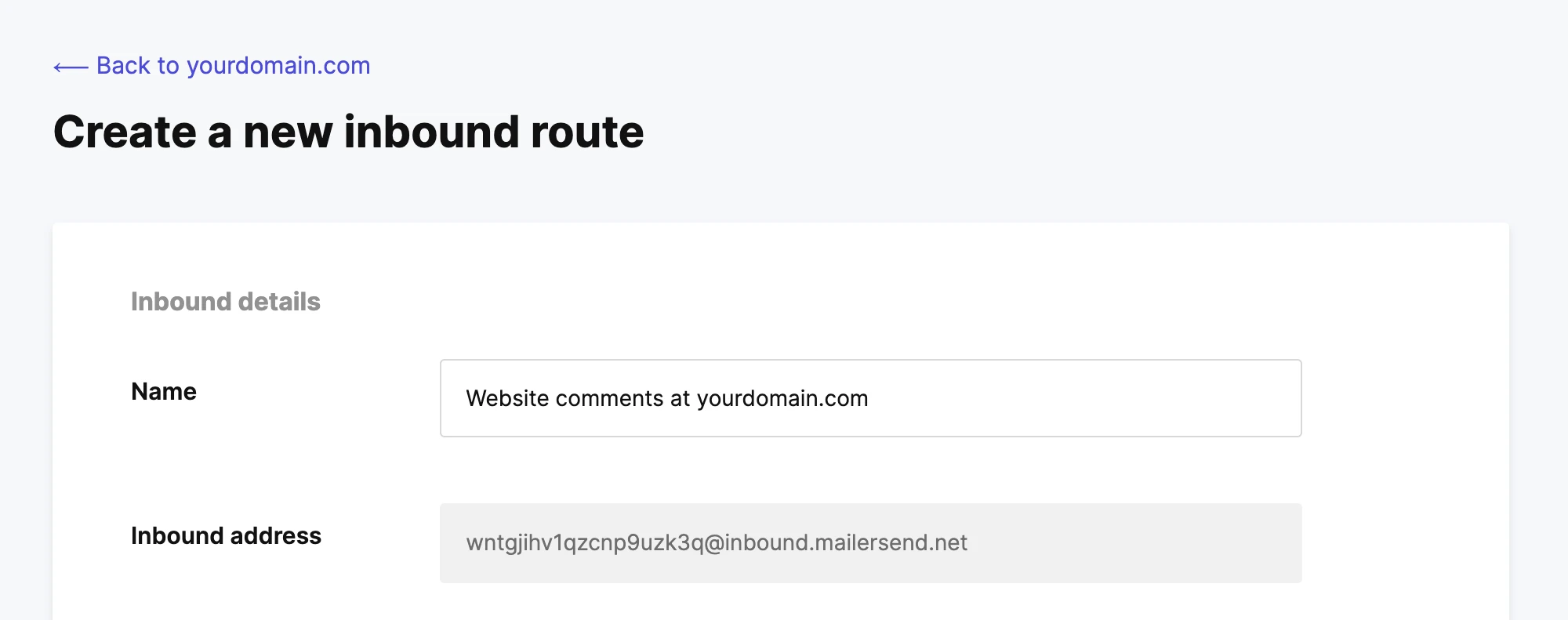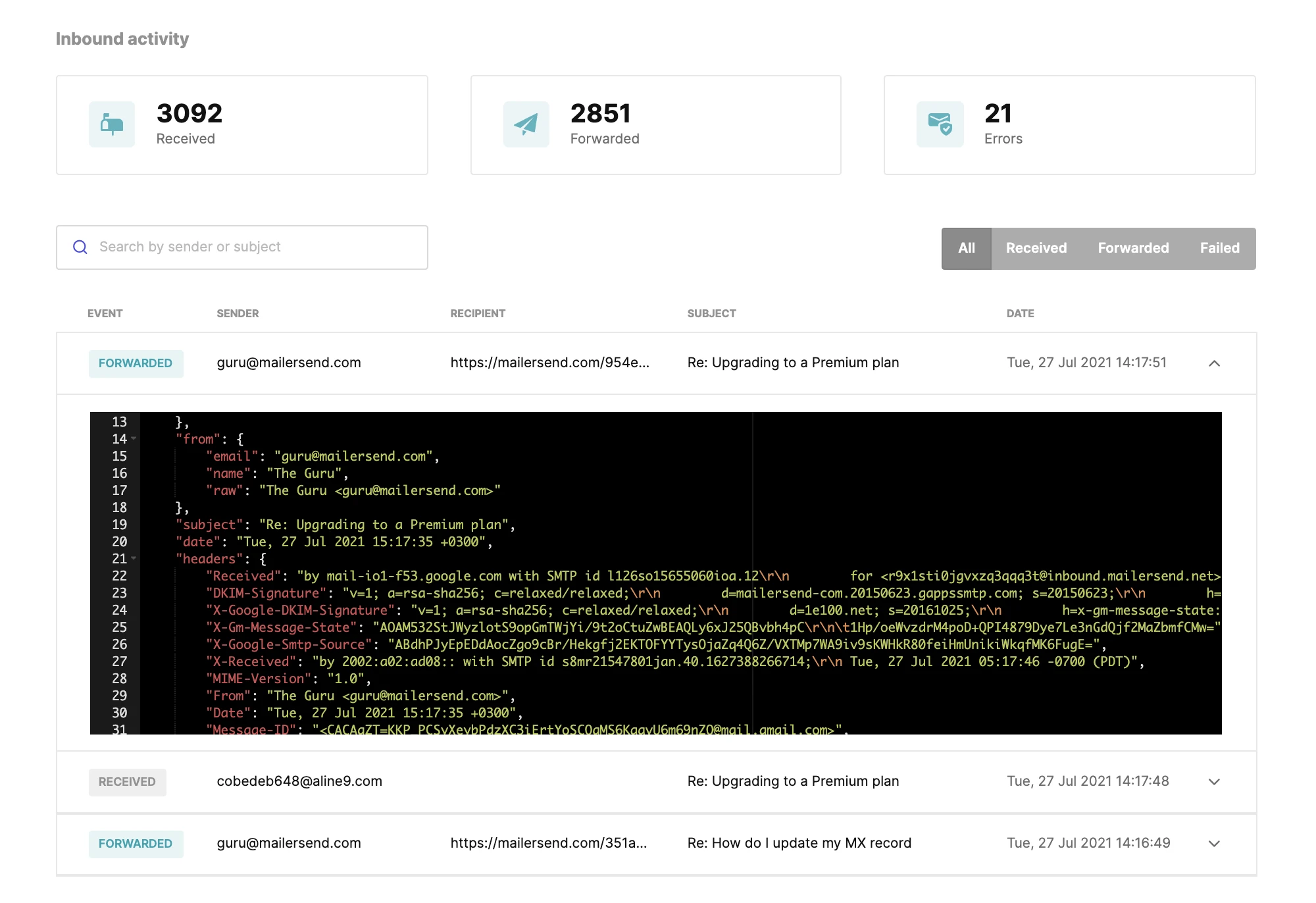
MailerSend is an advanced transactional email system that helps you manage and send transactional emails. We’re happy to announce that from today, you can also process incoming emails with a new inbound routing feature and integrate email messages in your application!

Inbound email routing accepts and parses the contents and attachments of incoming emails. These emails are received by a unique email address auto-generated by MailerSend or a connected domain or subdomain, sending the parsed results to your app’s endpoint URL.
If you want to start creating an inbound route now, jump straight to the help guide: How to set up an inbound route!
Use cases for inbound emails
Here are a few ways you can use inbound email routing in your transactional email workflow.
View emails without an email server
Let's say your users want to send a message within your app. An inbound route can post the email to an endpoint URL, keeping the conversation going by ensuring the correct recipient receives the message in the app.
For example, the hiring management app, MyZenTeam, includes a messaging feature where applicants can reply to the HR team via email. With the inbound email feature, the HR team can view emails in the app and reply to applicants.
Work with emails in JSON format
What if you wanted to share the contents of emails between servers, browsers and apps? You can by creating an inbound email route, parsing incoming emails into easy-to-read and straightforward JSON data.
For example, MailerCheck, an email verification and deliverability tool, uses inbound emails for their Email Insights feature. The app receives emails from users, who want to analyze their email content, directly into JSON format. MailerCheck is then able to perform HTML validation tests, analyze email headers, perform blocklist checks, and much more.
There are even more things you can do when you integrate emails into your app:
Submit support requests via email
Forward any documents to your app for posting or processing
Post any content on your website via email
Integrate inbound emails quickly
You can set up an inbound email route by skipping the DNS configuration: MailerSend helps you get started on integrating messages from recipients into your app, by automatically generating a ready-to-use inbound address like wntgjihv1qzcnp9uzk3q@inbound.mailersend.net.
This inbound address receives all emails sent to that address, just like a normal inbox. You or your customers can send or forward emails to that address if you want them to be processed with MailerSend’s inbound route.

Deliver a consistent brand experience
Provide a consistent experience by using a custom inbound domain that matches your brand. You can add an inbound route to a verified domain by creating an MX record in the DNS zone. To process inbound messages, you can use your domain or a dedicated subdomain, like inbound.yourdomain.com, if you already have a mail server on your parent domain. Or you can use your main domain in case you are not using it for your regular mails.

Control which email messages you are accepting
You can configure inbound email delivery routes to match your workflow so that you can receive all or specific emails at your domain. Catch filters can be used to accept incoming emails based on the email address recipients are sending to:

Catch all. Inbound emails sent to any email address at your inbound domain will be accepted. For example, if your inbound domain is inbound.yourdomain.com, all incoming emails sent to any address at @inbound.yourdomain.com will be received and forwarded to an endpoint URL or email address.
Catch recipient. Email messages sent to specific email addresses at the inbound domain will be captured. For example, if you have an Equal filter for the email address shipping@inbound.yourdomain.com, emails sent to this address will be detected and forwarded to the endpoint or email address that handles shipping inquiries.
Next, you can apply rule-based filters to accept incoming emails based on the email address recipients are sending from:

Match all. All emails sent to the inbound route email address will be accepted and forwarded to an endpoint URL or email address.
Match sender. Only specific sender email addresses will be accepted. For example, setting a match for guru@mailersend.com will only show messages from this email address.
Match domain. Use this filter to catch inbound emails from email addresses on specific domains, for example, mailersend.com.
Match header. Setting this filter will capture incoming emails that match specific key:value pairs in the email header. For example, a filter like Subject equal Shipping will match all emails containing “shipping” in the subject line.
Send emails to your application
MailerSend parses incoming emails into JSON, and then posts the email to your app via webhooks or by forwarding the message to an external email address. Inbound routing preserves the contents of email messages, including metadata, attachments, and raw MIME content like HTML and text.

View inbound activity and analytics
Detailed inbound activity is logged for each inbound route. See all the number of emails received by your inbound domain, including their subject lines and JSON payloads. You can also track messages sent to your application and see each attempt made to reach the endpoint.

What kind of use cases will you use inbound email routing for? Share in the comments below!
